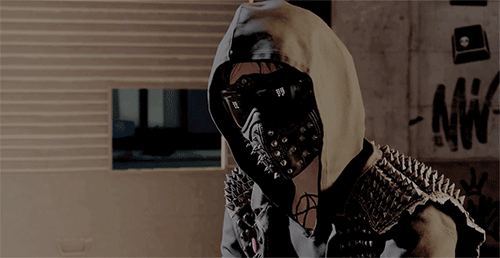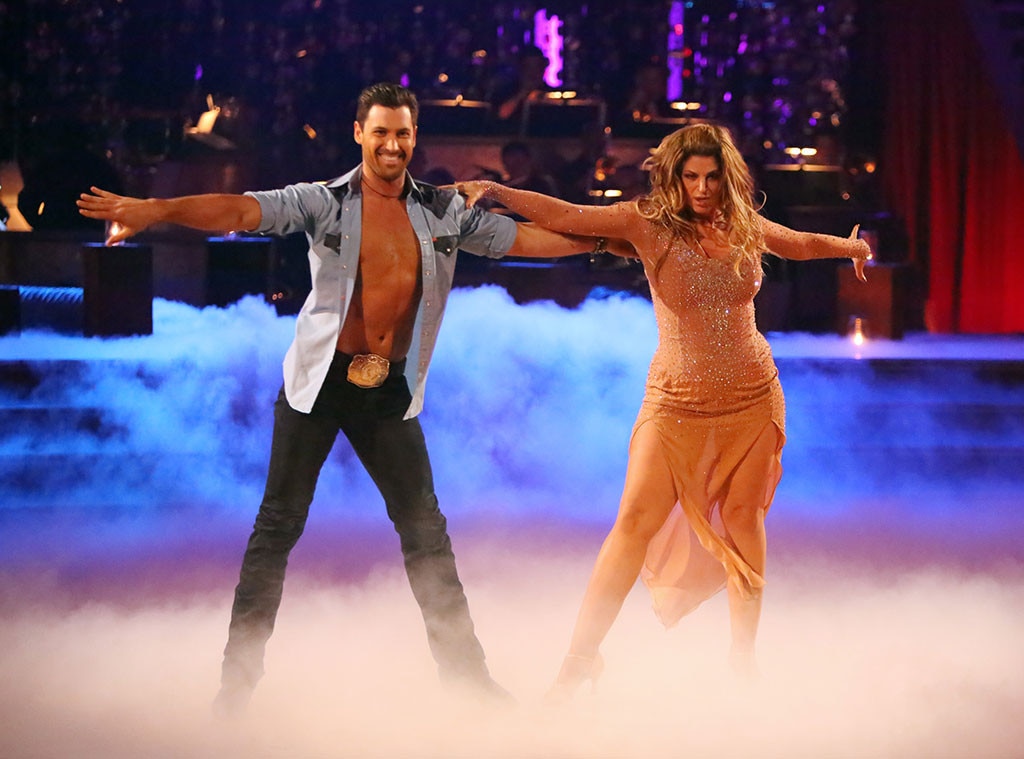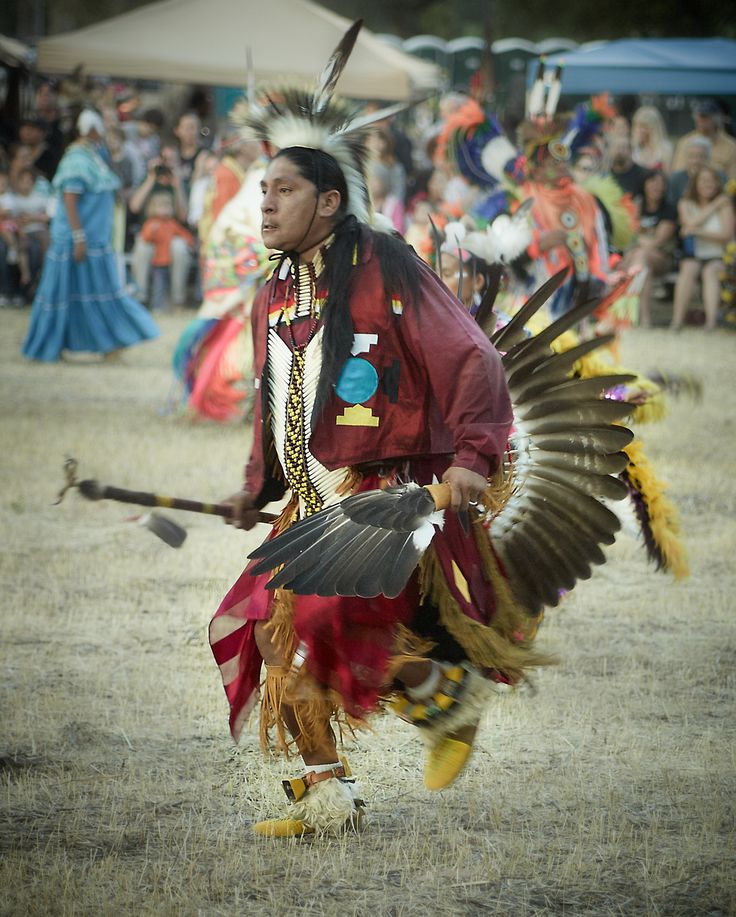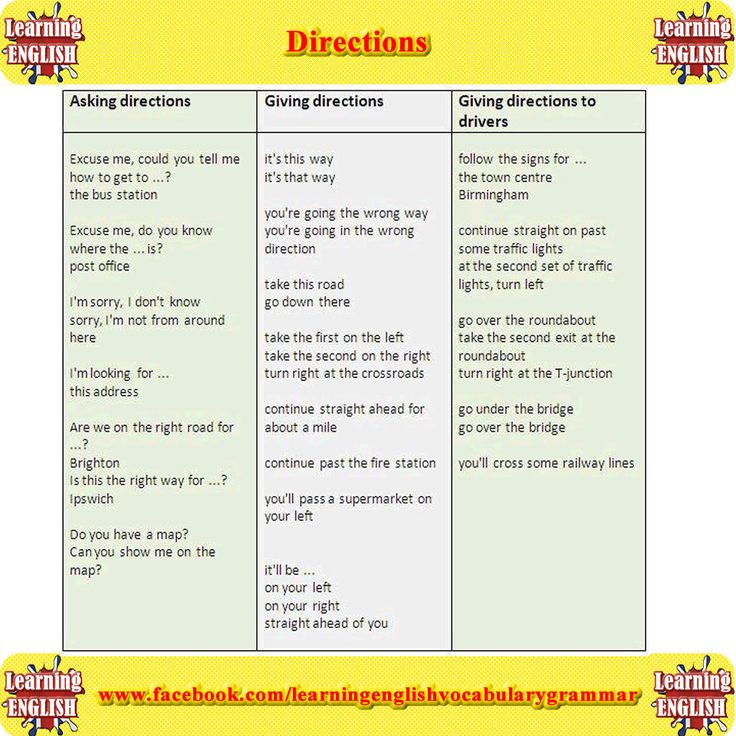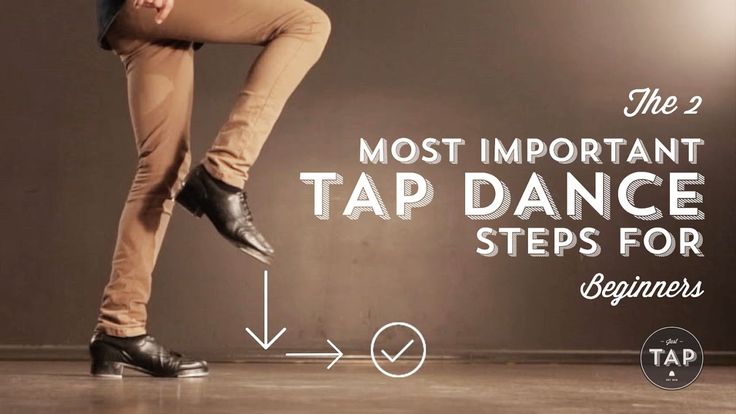How long has it been since dancing
Dance Facts and History
Dance is a form of art that is made by purposefully recreating selected sequences of human motion, which can be imbued with the values of aesthetic and symbolism that are acknowledged by both performers and observers from within the particular culture. The dance itself can be freeform or can have a predefined choreography that may or may not align with traditions of origin or historical period.
The dance can be performed to serve various functions (social, competitive,
ceremonial, martial, erotic…) but it also has two distinct forms – theatrical dance in which dancers perform for an audience,
and participatory social dance where dancing in a group is
encouraged to anyone. Participatory dances are most commonly found at
weddings, social gatherings, and festivals, and they can be enjoyed with
folk music both alone or in a group (pairs, lines, chains or other forms).
Theatrical dance is known for having more elaborate choreography, planning, costume, scenery and other elements that make the entire production feel more professional. The performers of theatrical dance are usually professional “ virtuoso dancers”, who practice their craft over the years, and are often tasked to interpret the musical accompaniment with advanced dance moves or routines.
Origins and Early History
The dance has always been with us, even before the arrival of written language and modern history,
when our earliest cultures evolved utilizing oral and performance methods
to pass the stories from one generation to the next. Many historians
believe that social, celebratory and ritual dances are one
of the essential factors of the development of early human civilizations.
The earliest findings have pinpointed the origins of ancient dances in 9000-year-old India or 5300-year-old Egypt, but the records more common infusion of dance into a modern culture can be found from Ancient Greece, China, and India. All these old dances evolved, eventually morphing into a wide variety of Roman and European medieval dances, traditional Chinese dances, Hindi and other traditional dances, respectively.
After the arrival of European Renaissance, the history of music and dance exploded with the new additions to song and dance. Ease of travel and immigration to the new world brought these dances into the mix with many native cultures of the New World, forging countless new dance types that are still popular to this day.
Do you know these facts about dance?
-
First archeological proof of dance comes from the 9 thousand year old cave paintings in India.

- One of the earliest uses of structured dance was introduced in religious ceremonies that told the stories of ancient myths and gods. Egyptian priests used this kind of visual storytelling in their rituals.
- Ancient Egyptians used dancing for both entertainment and religion.
- Dance represented important parts of many Greek and Roman religious ceremonies.
- Ancient Greeks and Romans annually celebrated their wine gods Dionysus and Bacchus with several days long festivities filled with alcohol, song and dance.
- History of European medieval dance is fragmented and limited, but is believed that simple folk dances were widespread among common and wealthy classes.
-
Modern dance history in Europe started with Renaissance, when many new dances were invented.
 After that, periods of Baroque, post French
Revolution, Elizabethan era, World War 1, Prohibition, Ragtime and pre-WW2 brought many new waves of dance styles.
After that, periods of Baroque, post French
Revolution, Elizabethan era, World War 1, Prohibition, Ragtime and pre-WW2 brought many new waves of dance styles.
- Waltz, one of the most popular dances today came into popularity in mid-19th century by the efforts of the famous composer Johann Strauss, but its origins can be traced even to the distant 16th century.
- At first, waltz was performed with arm's length between male and female dances. The shocking transition to the close embrace happened only after English Queen Victoria fell in love with the dance and forced this change.
- Around 30 thousand people are employed in UK dance industry today, maintaining around 200 dance companies.
-
Even people in wheelchairs can dance! Such dancing is very popular in Europe where there are even competitions in Latin dances with special
wheelchair choreographies.

- Professional dance is today regarded as one of the most demanding physical abilities and sports. According to studies, 80% of all professional dances have at least one major injury during their career and staggering 93% of all dance teachers were forced into that position after career ending injury.
- High amount of injuries in professional dancing is induced by high levels of fatigue, little time for rest, inadequate healing techniques and high stress levels. All those factors can produce burn out periods when dancers have decreased strength, coordination, cognitive and immune functions.
-
Lion Dance is one of the most popular religious and ceremonious dances in China and surrounding countries of Taiwan, Korea and Japan. This dance
can signify bringing of good fortune, ward of evil spirits and be an excellent showcase in martial arts proficiency.
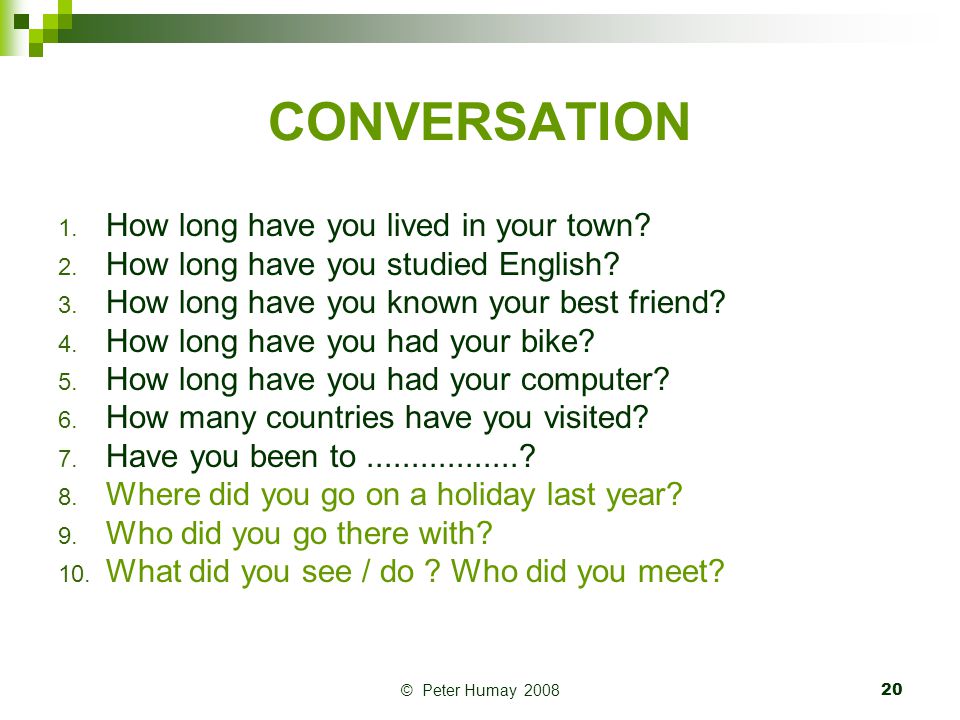
After several thousand years, dancing managed to completely infuse itself into our way of life. Here you can find more information about this fascinating activity and the impact it can have on our lives.
Since the dawn of human civilization, dance remained in close connection with us. Here you can find out more about this fascinating part of our culture, all from its roots in ancient civilizations to the modern times.
Thousand years of innovations and evolution created modern dance that we all enjoy today. Here you can find out more about specific dance styles and the way they are implemented and created.
There are many specific dances which can be sorted into single dance styles or families of related dances. Here you can read more about specific dances and variants of a specific dance.
Facts about Dancing
- Professional dances are today regarded as athletes.
-
Dancing is very beneficial to your health.
 It lowers the chances for heart and blood vessel diseases, improves posture and weight, reduces
stress and tension, improve brain function because of constant presence of music, and can improve relationship between dance partners.
It lowers the chances for heart and blood vessel diseases, improves posture and weight, reduces
stress and tension, improve brain function because of constant presence of music, and can improve relationship between dance partners.
- Because of the need to maintain strict head position while dancing, doctors often prescribe use of dance for those patients that need to develop their peripheral vision.
- First balled dancer that used pointe shoes was Marie Taglioni in 1832 ballet "La Sylphide".
- One tutu shoe cost up to $2000 dollars to be made, and one ballerina wears between 2 and three pairs per week.
- Because of high physical demand on their bodies, most professional dances retire from dancing during their mid-30s.
-
Famous modern dance Cha-Cha originated from Cuba.

- Famous energetic ballroom dance can-can (or cancan), which is performed by the row of female dances in long skirts originated form 1830s Paris ballrooms.
- Origin of tap-dancing comes from the tribal dances of African slaves. Their arrival in North America introduced that dance to the western audiences.
- Dancing with metal tap shoes became popular in United States during 1920s and 1930s. One of the most famous tap-dancing performers of that time were Nicholas brothers, who were instrumental into bringing that style of dance into Hollywood movies.
- Famous movie stars such as Fred Astaire, Ray Bolger and Gene Kelley used tap-dancing to enchant the minds of the worldwide audience with great success.
-
Hindu religion has very close relationship to dance and music.
 This connection can most visible be seen in their countless Bollywood movies that
all celebrate dancing.
This connection can most visible be seen in their countless Bollywood movies that
all celebrate dancing.
- One of the dances that managed to completely change the landscape of dance history is polka! This energetic dance that was focused for young women that liked to jump, hop and turn swept across the world in mid-19th century.
- Dancing represent great physical exercise for the people of all age. It can be safely practiced from the age of 2 to 102!
- Many historical waves of dances were perceived as the "destructors" of the old way of dance. Examples of that can be found in the 1920's Charleston and the era of Rock music.
- First ballroom dance that was ever created is Italian Viennese Waltz.
-
One of the reason that ballroom dancing is starting to return into popularity is because famous TV competition show "Dancing with the Stars".
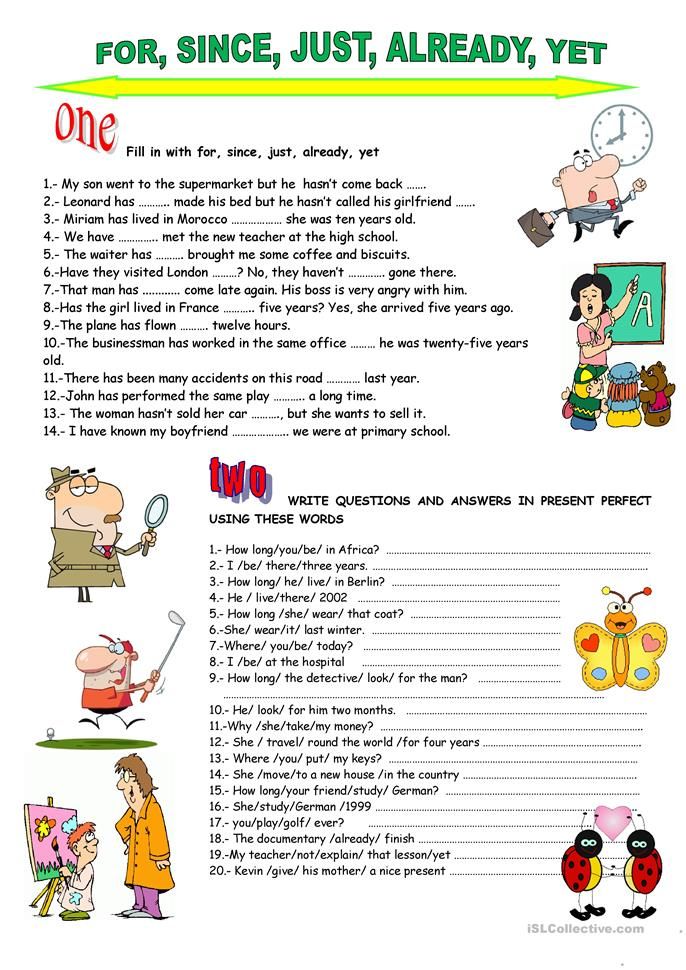
- African slaves that were brought in Brazil 300-400 years ago were prohibited from practicing martial arts. Therefore, they developed the mix of dancing and fighting that is known today as capoeira.
- Breakdancing was first created as a "less lethal" form of fighting between warring African-American street gangs in 1970s Bronx area of New York City. This form of dancing re-emerged into worldwide popularity during 1990s.
- Dance marathon competition started as early as 14th century England. They reached height of their popularity in the bloom of US entertainment expansion during 1930s depression era. Some competitions were performed in the 22 day long marathons.
-
The most sensual dance of modern times is without a doubt a Tango. It originated from 1890s Argentina, but it quickly became very successful in
Europe.

History of Dance - From Ancient Rituals to Modern Dances
From the earliest moments of known human history, dance accompanied ancient rituals, spiritual gatherings and social events. As a conduit of trance, spiritual force, pleasure, expression, performance and interaction, dance became infused into our nature from the earliest moments of our existence - from the moment when first African tribes covered themselves in war-paint to the to the spreading of music and dance across all four corners of the world. Without a doubt, dancing remains one of the most expressive forms of communications that we know.
The oldest proof of existence of dancing comes from the 9000 year old cave paintings that were found in India, which depicts various scenes of hunting,
childbirth, religious rites, burials and most importantly, communal drinking and dancing. Since dancing itself cannot leave clearly identifiable
archeological artifacts that can be found today, scientist looked for secondary clues, written word, stone carvings, paintings and similar artifacts. Period when dancing became widespread can be traced to the third millennia BC, when Egyptians started using dance as integral parts of their religious
ceremonies. Judging by the many tomb paintings that survived the tooth of time, Egyptian priests used musical instruments and dancers to mimic
important events - stories of gods and cosmic patterns of moving stars and sun.
Period when dancing became widespread can be traced to the third millennia BC, when Egyptians started using dance as integral parts of their religious
ceremonies. Judging by the many tomb paintings that survived the tooth of time, Egyptian priests used musical instruments and dancers to mimic
important events - stories of gods and cosmic patterns of moving stars and sun.
This tradition continued in ancient Greece, where dance was used very regular and openly to public (which eventually brought the birth of the famous Greek theatre in 6th century BC). Ancient paintings from 1st millennia clearly speak of many dance rituals in Greek culture, most notably the one before start of each Olympian Games, precursor to the modern Olympic Games. As centuries went on, many other religions infused dance in the core of their rituals, such as Hindu dance "Bharata Nhatyam" which is preformed even today.
Of course, not all dances in those ancient times were intended for religious purposes. Ordinary people used dance for celebration, entertainment,
seduction and to induce the mood of frenzied exhilaration. Annual celebration in honor of Greek god of wine Dionysus (and later Roman god Bacchus)
included dancing and drinking for several days. 1400BC year old Egyptian painting showed the group of scantily dressed girls who danced for the wealthy
male crowd, supported by the several musicians. This kind of entertainment continued to be refined, until medieval times and the start of the
Renaissance when ballet became integral part of the wealthy class.
Ordinary people used dance for celebration, entertainment,
seduction and to induce the mood of frenzied exhilaration. Annual celebration in honor of Greek god of wine Dionysus (and later Roman god Bacchus)
included dancing and drinking for several days. 1400BC year old Egyptian painting showed the group of scantily dressed girls who danced for the wealthy
male crowd, supported by the several musicians. This kind of entertainment continued to be refined, until medieval times and the start of the
Renaissance when ballet became integral part of the wealthy class.
European dances before the start of Renaissance were not widely documented, any only few isolated fragments of their existence remain found today. The
most basic "chain shaped" dance practiced by commoners was most widespread across Europe, but the arrival of Renaissance and new forms of music brought
many other styles in fashion. Renaissance dances from Spain, France and Italy were soon surpassed by Baroque dances which became widely popular in
French and English courts. After the end of French Revolution, many new types of dances emerged with focused on less restrictive woman clothing, and
tendency for skipping and jumping. These dances soon became even more energetic in 1844 with the beginning of so called "international polka craze"
which also brought us the first appearance of famous waltz.
After the end of French Revolution, many new types of dances emerged with focused on less restrictive woman clothing, and
tendency for skipping and jumping. These dances soon became even more energetic in 1844 with the beginning of so called "international polka craze"
which also brought us the first appearance of famous waltz.
After the short period of time when great ballroom masters created wave of complicated dances, the era of modern day 2 person dance started with the careers of famous ballroom dances Vernon and Irene Castle. After those early years of 20th century many modern dances were invented (Foxtrot, One-Step, Tango, Charleston, Swing, Postmodern, Hip-hop, breakdancing and more) and the expansion of musical brought those dances into worldwide popularity.
Gorshkov about the skill of the dancers, the peculiarities of refereeing and the rationality of Morozov - RT in Russian
The reason for parting with the wards may be a momentary misunderstanding. This was stated in an interview with RT by Russian figure skating coach Alexei Gorshkov. According to him, many transitions happen because of the attempts of the skaters to find the guilty ones. The specialist also explained why the desire to do something new and interesting in dancing has not been enough for a long time, told how they reacted to his proposal to increase the number of required elements in the programs, and remembered how Nikolai Morozov convinced him to remove one of the elements from the production, which Gorshkov himself considered a feature of the program. nine0003
This was stated in an interview with RT by Russian figure skating coach Alexei Gorshkov. According to him, many transitions happen because of the attempts of the skaters to find the guilty ones. The specialist also explained why the desire to do something new and interesting in dancing has not been enough for a long time, told how they reacted to his proposal to increase the number of required elements in the programs, and remembered how Nikolai Morozov convinced him to remove one of the elements from the production, which Gorshkov himself considered a feature of the program. nine0003
— Your figure skaters Albena Denkova and Maxim Stavisky actually did the impossible in 2006 by winning the world championship. And although over the past 16 years you have gained experience, knowledge, and you can, as Tamara Moskvina once said, shorten the path to the goal, no equally outstanding duets appeared in your group. Is it due to the lack of talented “material” or something else?
- Offhand and do not answer. But there were also Oksana Domnina and Maxim Shabalin.
But there were also Oksana Domnina and Maxim Shabalin.
- Who left you for Natalia Linichuk right after they won the European Championship in 2008. Why? nine0006
- I'm not the one to ask. The decision then was made not by me and not even by the athletes. Rather, they were persuaded to do so.
Also related
“I don’t consider this an achievement”: Kondratyuk on Ronaldo’s 500 million subscribers, contemporary art and skydiving
500 million subscribers is a marker of insane popularity and fame, but for Cristiano Ronaldo it is more important that he is a great footballer. Ob...
- I don’t want to offend you, but I remember very well how ambiguous the decision to put Domnina and Shabalin to the European championship was perceived, although only two weeks had passed since Maxim’s knee surgery.
- That season between my pair and Isabelle Delobel - Olivier Schoenfelder (European champions in 2007 .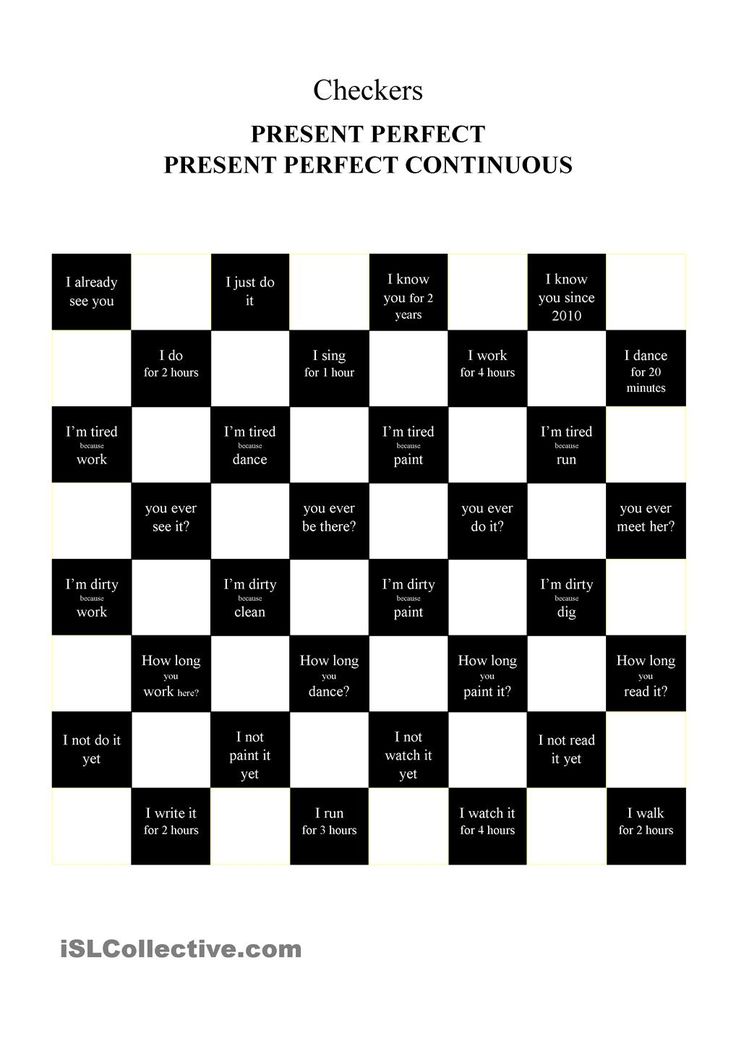 - RT ) there was a very difficult and principled tactical struggle. Therefore, Oksana and Maxim had to "take" Europe at all costs. I remember we were sitting in the office of Valentin Piseev, where he himself, the national team doctor Viktor Anikanov, someone else from the leadership, me and my athletes were present. And just there they jointly decided: you need to ride. nine0003
- RT ) there was a very difficult and principled tactical struggle. Therefore, Oksana and Maxim had to "take" Europe at all costs. I remember we were sitting in the office of Valentin Piseev, where he himself, the national team doctor Viktor Anikanov, someone else from the leadership, me and my athletes were present. And just there they jointly decided: you need to ride. nine0003
Then, when Max's leg problems worsened predictably, all the blame, as usual, was put on the coach. Like, it was I who made the guys go on the ice so early.
— I can understand the leadership's position: that season we had no chance to get on the podium in either men's or women's skating, and we had to get medals at any cost. But did you really not understand the consequences?
— I understood, of course. But here you can’t answer which was more correct. In the end, the guys won the title, became champions. nine0003
— Is it possible to get used to the fact that athletes go to another specialist?
— Of course not. It is clear that over time everything begins to be perceived less emotionally, but in any case it is a drama. Like a family in a divorce. Whatever the relationship, it hurts for everyone.
It is clear that over time everything begins to be perceived less emotionally, but in any case it is a drama. Like a family in a divorce. Whatever the relationship, it hurts for everyone.
The most disgusting and unpleasant thing is when you realize that some momentary misunderstanding becomes the reason for the breakup. All my life and coaching experience shows that transitions occur basically for the same reason: when an athlete fails to achieve the desired result, he begins to look for the guilty on the side. Trying to find an excuse in any way. nine0003
- Well, it's so unpleasant to think that he himself gave up the slack.
- Quite right. I remember in some documentary Boris Eifman was asked how he treats his artists. And he replied that he treats them precisely as artists. That is, as to people who see only themselves in the mirror.
Athletes are the same case. They seem to live inside themselves and do not even try to look from the outside.
And it turns out that the coach is a person who constantly says some unpleasant things. Since he clearly understands what he should give an athlete in a specific situation with no less specific opponents, rules and judges ... Of course, it's great when a mentor and a skater work in unison in this regard, but in practice this rarely happens. nine0003
- Jane Torvill and Christopher Dean have been considered the standard of ice dancing for several decades, but my personal attitude to the genius of Dean as a choreographer at one time was greatly shaken by the fact that both the championship Bolero and the Aztec dance that Christopher choreographed for Isabelle and Paul Duchesnay, and many demonstration numbers were the result of an almost direct transfer to the ice of the choreographic productions of the ballet Ghost. Where do you get your ideas from?
— Borrowing to some extent, of course, is permissible, but, in addition, you need to constantly go to theaters, study modern choreographic trends. An unexpected idea can come to mind even when watching other people's programs, not necessarily of a high level. At one time, the idea of one of the free dances of Domnina and Shabalin, choreographer Sergei Petukhov and I, was inspired by Pukirev's painting "Unequal Marriage". We even dressed Oksana then as a bride. nine0003
An unexpected idea can come to mind even when watching other people's programs, not necessarily of a high level. At one time, the idea of one of the free dances of Domnina and Shabalin, choreographer Sergei Petukhov and I, was inspired by Pukirev's painting "Unequal Marriage". We even dressed Oksana then as a bride. nine0003
Petukhov generally liked to tell athletes what exactly they were skating. Create a visual image. I still use this technique when I work with little ones. When a skater has a libretto clearly in his head, the viewer immediately understands: there is a thought in the program, there is an idea, there is something that you want to follow the development of. If there is no content in the program, then no form will help.
Also related
The uniqueness of Gilles - Poirier and the restraint of Mishina - Galliamova: the combined rating of dancers and couples in the 2022/23 season nine0006
Canadians Piper Gilles and Paul Poirier have established themselves as trendsetters in ice dancing since their victory in Espoo. Their Russian counterparts...
Their Russian counterparts...
— Winners of the Grand Prix final Piper Gilles and Paul Poirier — is it a long time, from your point of view? And can you unequivocally call them the leaders of this season?
- Leaders - not a fact, but I always liked them very much. They're cool. Always unusual, always going their own way. Life shows that people who are true to their style are selected to the top in ice dancing. nine0003
- If we assume that all the top ten skaters in dancing are equally good at step technique and equally capable of gaining high levels of difficulty, then we will come to the conclusion that success at the highest level is determined not by technique, but by choreography. That is, performances.
- Of course. If we look at the top ten under normal judging, everyone is really the same in terms of skill. By and large, everyone rides to the fourth level, and the one who performs all the elements with a plus turns out to be higher. If we remember Gabriela Papadakis and Guillaume Cizeron, they once relied on the purity of skating. The desire to do something new and interesting in dance is not enough. You need to make it as easy and cool as possible. nine0003
If we remember Gabriela Papadakis and Guillaume Cizeron, they once relied on the purity of skating. The desire to do something new and interesting in dance is not enough. You need to make it as easy and cool as possible. nine0003
— Every year I ask myself the same question: why can't I realize in dance what Ilya Averbukh and Alexander Zhulin do so well in the Ice Age? You can relate to the project in different ways, but the productions are really catchy.
— It is clear that everyone who takes part in the staging of this project has already got their hands on it. And they are well aware of what else the artists are able to take on as judges. You can't take technology.
- Yekaterina Ryazanova and Ilya Tkachenko with Alexei Gorshkov at a training session ahead of the World Figure Skating Championships in Nice nine0094
- RIA News
- © Alexander Wilf
- I agree. But let's look differently. Quite a few duets broke up last year in Russian dances. And now we, in fact, have the same "Ice Age", only at a higher level. People skate together for a week, and it would seem that coaches should be extremely concerned that their pairs be remembered, stand out from the crowd. Instead, we see a lot of absolutely passable programs. Your dancers Irina Khavronina and Dario Chirizano are a pleasant exception against this background. nine0006
- I also had unsuccessful programs, although I take each production extremely seriously - just so that it becomes not a passing one, but as interesting as possible. But here another question arises: what is of greater value? Yes, at the Olympics or the World Championships, the value of the staging, energy, charisma of athletes who are in the top is incredibly high. But it doesn't work for us. And the idiotic fourth level works, which you get or don’t get depending on how the judges agree among themselves. And who cares that you skate the most interesting program? nine0003
There is a second point.
People do not always want to spend a lot of hours on choreography. Working with the same Giuseppe Arena is like diving into the ocean. The deeper you dive, the more you learn. To create a masterpiece, it is desirable to cooperate not with one specialist, but with several. And in order to get a fourth level for a track or rotation, such efforts are not even close.
— I know that in each dance judging team there are always people who privately advise certain duets outside of competitions. Is this practice right or wrong? nine0006
- Of course, vicious. But it's not only that. Previously, all figure skaters, including juniors, went to certain competitions at the beginning of the season, and the marks obtained there were, as it were, a guideline for judges at all subsequent starts. Now everyone is in a closed space. After Alla Shekhovtsova retired, any control disappeared. None of the six tournaments of the Russian Grand Prix was adjudicated in dancing so that this did not raise questions.
— Last year's mass rearrangements in Russian dances - a consequence of the sudden pre-Olympic "progress" of Diana Davis and Gleb Smolkin? nine0006
- Well, the athletes themselves have nothing to do with it, their job is to go out and ride. At the same time, we then had a conversation with the leadership of the federation. We asked not to include a person who had just returned from Detroit to the technical team, and everyone understood that he was an affiliated person. We were assured that everything would be fine, but in reality nothing has changed.
Also related
“He said he didn’t want to change anything”: Annabel Morozov - about parting with Narizhny and the desire to become a champion nine0006
It makes no sense to build serious plans when there is no mutual understanding between the partners. This was stated in an interview with RT by the winner of two...
The point here is not that hands down. Such things do not work in favor of sports as such. What's the point? Now, for example, it is not in our power to change the situation in the country. Accordingly, no one understands when athletes will be able to return to international competitions. But inside ourselves, we should at least try to become better? To do this, we need to give people the opportunity for healthy, unbiased competition, so that at each training session they set themselves the task of winning against themselves - yesterday. nine0003
You asked me before the interview if I watched the ISU Grand Prix. Naturally, I looked. Dance is constantly evolving. And it is not known how we will look when we return after this "commercial break".
- Do the current ISU rules develop athletes or limit them?
- I would change something about them. In general, I don't think this issue works very well.
Why?
- Well, look: in dance support, the partner has three difficult positions - on one leg, boat and seed. I once asked why not come up with something else, do not do five or six positions. In response, I heard: in this case, it will be difficult for technical specialists to keep track of everything. nine0003
I once asked why not come up with something else, do not do five or six positions. In response, I heard: in this case, it will be difficult for technical specialists to keep track of everything. nine0003
If we talk about the current rules, this year, for example, the dancers were given a chore track actually across the rink and with a mandatory stop. And immediately the dynamics disappeared, which is of tremendous importance in dances. Rhythm dance is not too fast anyway, because you have to fulfill a lot of not very simple requirements, and this season it just got up. It's not very noticeable on video recordings, but it's very noticeable live.
— When in December you joined forces with Nikolai Morozov, Irina Zhuk and Alexander Svinin, it was clear that this was done primarily for the sake of Alexandra Stepanova and Ivan Bukin. What is the point of teamwork now that Sasha has taken a break and the couple has temporarily ceased to exist? nine0006
— Zhuk and Svinin and I continue to work in a rather interesting format.
For some time we disperse to our skating rinks, then we meet in Novogorsk. This season we have already held four such gatherings. We work together, go to tournaments together, discuss some problems together. This is very beneficial for skaters - they are getting better, there is no usual monotony, there is always some kind of novelty. Each of the coaches has their own vision of the process, and that's great. It is a pity, of course, that Morozov is stuck in the USA. He is the only one of us who has a lot of experience with single skaters, and this is a completely different look, a different approach to the process. nine0003
— And in more detail?
- At one time, Igor Ksenofontov began to use this chip in his work, with whom the parents of Ilya Malinin once trained. He was the first to consider movement not from the point of view of beautiful positions, but the work of the body as a spring and the rationality of all movements. In the work of Morozov, this is very clearly seen. Kolya is generally a very talented person, in some ways he is simply a genius. Moreover, rationality is at the forefront in each of his programs. nine0003
Kolya is generally a very talented person, in some ways he is simply a genius. Moreover, rationality is at the forefront in each of his programs. nine0003
He once joked that he hadn't danced for three years and was constantly surprised by the coaches who stand by the yellow dance protocols and think that all the most interesting things happen there. Although in reality this is not at all the case.
When we started working together, Morozov somehow looked at my couple Arina Ushakova - Maxim Nekrasov and said about one of the elements: "Let's throw him out?" I began to convince him that there was no need to throw anything away and that this was a kind of trick, but Kolya convinced me. He said that if I do as he advises, the guys will immediately go much faster, much easier, without nervousness, and as a result, they will gain much more pluses. nine0003
Also related
“So what now, are we going to judge Picasso?”: Zueva on borrowing ideas, peculiarities of Latin and the popularity of Takahashi
In the eyes of many Japanese, Daisuke Takahashi is a pioneer in figure skating, while a two-time Olympic champion. ..
..
— Before pairing with David Narizhny, Annabel Morozov skated with you and Andrei Bagin. Why, after changing partners, did the skaters go under the command of Irina Zhuk and Alexander Svinin? nine0006
- Everything is simple here. A pair of Morozov - Bagin was assigned to Perm, and Narizhny - to the Olympic reserve school, whose coaches are Svinin and Zhuk. So we decided to transfer Annabelle to RBM-4 so that both partners represent the same organization. It would be much more difficult to deal with the transfer of both athletes to Odintsovo.
- The reason why Annabelle and David broke up was the partner's unwillingness to fly to Morozov before the Russian Championship in the USA. Many, I know, wondered: what's the point of going to America for two weeks? nine0006
- This is a double-edged sword. If Kolya came to Moscow for these two weeks, it would be an ideal option that would allow him to really work effectively on programs. But flying to America from Russia is a completely different story. Five days are lost only on flights. So I'm not ready to answer what would be better.
Five days are lost only on flights. So I'm not ready to answer what would be better.
- Now they say quite a lot that Davis - Smolkin, most likely, will skate for the USA, and Annabelle can go to look for a partner in France and, accordingly, compete for this country. Do you assume that some of your athletes may also want to leave? nine0006
- Of course. Especially now the transitions are greatly simplified. If you have a passport, you can get permission to change sports citizenship in two months. It is clear that it is not customary to talk about this, but as a coach I simply have to keep all possible options in my head.
It's just that now, it seems to me, we need to think about how the skaters remain as active and energized as possible, and not about something else.
- Coach Alexei Gorshkov, doctor Viktor Anikanov and coach Nikolai Morozov nine0094
- RIA News
- © Alexander Wilf
With a song through life
Our veterans
22.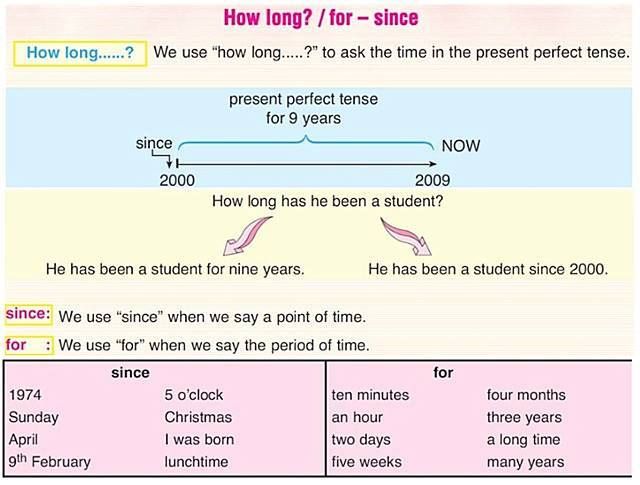 10.2020
10.2020
Anna Vasilievna Morozova, from the generation that saw the Great Patriotic War, restored the destroyed country and achieved incredible labor successes. This fall, she was awarded the title of Honorary Veteran of Nizhny Novgorod. nine0003
Anna Morozova was born on February 7, 1930 in the Kirov region, in the village of Bolshaya Troshinskaya. There were seven children in the family, she is the youngest. My father passed away before the war.
When the Great Patriotic War began, the village was empty, the men went to the front. The children worked on the collective farm. Anna Vasilievna learned how to handle horses, mowed, weeded. In the summer, the guys were engaged in field work, in the winter they knitted mittens for the front. We walked three kilometers to school. nine0003
As Anna Vasilievna recalls, there were once about fifty houses in their village. Today there is none left.
Now, out of seven children, only I and two sisters are left. The older brother has gone missing. He came on vacation for ten days. From the road on the way back he sent a letter: they say, I'm going to the front. And everything disappeared.
The older brother has gone missing. He came on vacation for ten days. From the road on the way back he sent a letter: they say, I'm going to the front. And everything disappeared.
Anna Vasilievna came to Gorky at the age of 16 with her mother. It happened shortly after the end of the Great Patriotic War. nine0003
- We came to the city to my sisters, - says the veteran. - They lived in the village of Gavan, which was located almost at the very Oka. Now GAZ shops are located at this place.
In the 14-meter room where the family settled, 8 people crowded. Residents of a wooden house used to sleep right on the street or in the corridors. From the situation there was only a table and beds.
At the school of factory training at the Gorky Automobile Plant, Anna Vasilyevna graduated from courses and went to work - to make a chassis for GAZ-51 trucks. At first, she did not really like the city, she admits that she felt embarrassed after the expanses of her native village. nine0003
nine0003
- In the village - forest, berries, mushrooms ... And in the city at first I even cried. But then I got used to it, she says. - It was cold in the shops in winter, they worked on the machines - their hands were freezing. Stick your palms in hot water, they will warm up - and continue.
In their free time in winter, the inhabitants of the Gavan went to Sotsgorod to watch movies in a large company. We walked several kilometers on foot through the village of Zapadny.
And in the summer they often spent time in a local club, where they held dances in the evenings. There Anna Vasilievna met her future husband, Ivan Petrovich Morozov. He was a participant in the Great Patriotic War, reached Berlin. After demobilization, he got a job at the Gorky Automobile Plant, with which, like his wife, he connected his entire working life. Ivan Petrovich worked as a mechanic in a forge until his retirement. The front-line soldier passed away almost 22 years ago. nine0003
- When my husband watched programs dedicated to the war, for example, concerts or documentaries, he always cried, - Anna Vasilievna shares her memories. - He said that in Berlin our troops celebrated Victory Day on May 9, but the shots in the city did not subside for another two weeks.
- He said that in Berlin our troops celebrated Victory Day on May 9, but the shots in the city did not subside for another two weeks.
In 1966, Anna Vasilievna moved to the gearbox factory, where she began working as a machine operator, then as an adjuster. In the late 1960s, she received an apartment from GAZ.
“We moved to a new house when our son was in the third grade, and my daughter was about a year old,” says Anna Morozova. - They are now retired. How much time has passed...
In 1976, Anna Vasilievna was awarded the “Veteran of the USSR Automotive Industry” badge for excellent work, in 1981 she became the best worker of the gearbox plant in her profession, and in 1982 she received two awards at once: the Order of Labor Glory III degree and a Certificate of Honor Ministry of the automotive industry of the USSR. nine0003
- The order at the Palace of Culture was personally presented to me by the general director of the Gorky Automobile Plant Ivan Ivanovich Kiselev, - Anna Vasilievna recalls.
